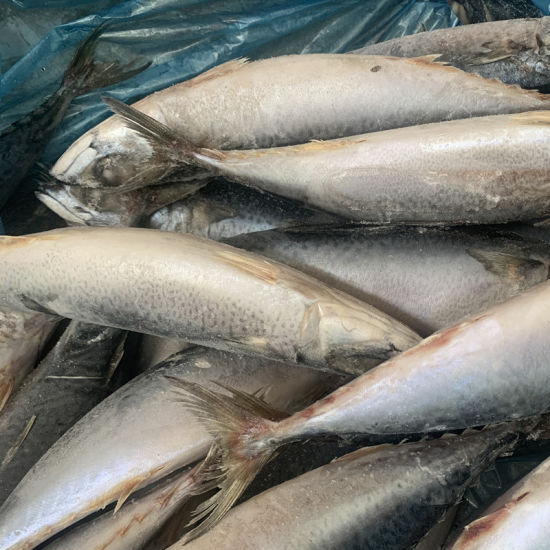When it comes to stocking up on seafood, purchasing wholesale frozen fish can offer numerous benefits that make it a must-have for your inventory. Whether you’re a restaurant owner, a caterer, or simply a seafood enthusiast, buying in bulk can save you money, ensure you always have high-quality products on hand, and help you meet the demands of your customers. In this blog post, we’ll explore the key advantages of wholesale frozen fish, provide actionable tips for managing your inventory, and explain why it should be a staple in your commercial fishing ship supply.
The Advantages of Wholesale Frozen Fish
Cost Savings
One of the most significant benefits of purchasing wholesale frozen fish is the cost savings. Buying in bulk typically reduces the price per unit, allowing you to save money while maintaining a steady supply of seafood.
• Example: A restaurant that buys wholesale frozen fish can lower its food costs, thereby increasing its profit margins. This is especially important in an industry where margins can be tight.
Consistent Quality
Wholesale frozen fish is often flash-frozen shortly after being caught, which helps preserve its freshness and nutritional value. This means you can count on consistently high-quality products, regardless of the season or market conditions.
• Tip: Look for suppliers that provide detailed information about their freezing and handling processes to ensure you’re getting the best quality fish.
Extended Shelf Life
Frozen fish has a much longer shelf life compared to fresh fish, reducing the risk of spoilage and waste. This is particularly beneficial for businesses that need to manage their inventory efficiently.
• Example: A catering business can stock up on wholesale frozen fish and use it as needed, without worrying about the fish spoiling before it can be used.
Actionable Tips for Managing Your Seafood Inventory
Proper Storage
To maximize the shelf life and quality of your wholesale frozen fish, it’s essential to store it properly. Keep your freezer at a consistent temperature of 0°F (-18°C) or lower to maintain the fish’s freshness.
• Tip: Invest in a reliable commercial freezer with good insulation and temperature control to ensure your fish stays frozen at the optimal temperature.
Inventory Rotation
Practice the first-in, first-out (FIFO) method to manage your inventory. This ensures that older stock is used first, reducing the risk of spoilage and waste.
• Tip: Label each package of fish with the date it was received and organize your freezer so that older stock is easily accessible.
Regular Inventory Checks
Conduct regular inventory checks to monitor your stock levels and identify any issues, such as freezer burn or damaged packaging. This helps maintain the quality of your seafood and ensures you have enough stock to meet demand.
• Tip: Use inventory management software to keep track of your stock levels and receive alerts when it’s time to reorder.
Why Wholesale Frozen Fish Is Essential for Your Business
Meeting Customer Demand
Having a steady supply of wholesale frozen fish ensures that you can meet customer demand, even during peak periods or when fresh fish is not readily available. This is crucial for maintaining customer satisfaction and loyalty.
• Example: A seafood restaurant can always offer popular dishes like fish and chips or seafood pasta, even during off-seasons, by using high-quality frozen fish.
Versatility in Menu Planning
Frozen fish offers versatility in menu planning, allowing you to create a wide range of dishes without being limited by seasonal availability. This flexibility can help you keep your menu exciting and varied.
- Tip: Experiment with different types of fish and recipes to keep your menu fresh and appealing to customers.
Supporting Sustainability
Many suppliers of wholesale frozen fish adhere to sustainable fishing practices, which help protect marine ecosystems and ensure the long-term availability of seafood. By choosing sustainably sourced fish, you can support these efforts and appeal to environmentally conscious customers.
- Example: Look for certifications from organizations like the Marine Stewardship Council (MSC) to ensure the fish you purchase is sustainably sourced.
The Role of Commercial Fishing Ship Supply
Reliable Supply Chain
For businesses that rely on a steady supply of seafood, such as restaurants and caterers, having a reliable commercial fishing ship supply is essential. This ensures that you can consistently offer high-quality seafood to your customers.
- Tip: Establish strong relationships with reputable suppliers to ensure a reliable supply chain and avoid disruptions.
Cost-Effective Procurement
Purchasing seafood through a commercial fishing ship supply can be more cost-effective than buying from multiple sources. This can simplify your procurement process and help you negotiate better prices.
• Example: A restaurant chain can benefit from volume discounts and streamlined procurement by working with a single supplier for its seafood needs.
Quality Assurance
Reputable commercial fishing ship suppliers often have stringent quality control measures in place, ensuring that the seafood you receive meets high standards for freshness and safety.
• Tip: Verify the quality assurance practices of your suppliers and request information about their handling and freezing processes.
Practical Advice for Using Wholesale Frozen Fish
Thawing Methods
Proper thawing is crucial to maintaining the quality of frozen fish. Thawing in the refrigerator overnight or using the cold water method are the best options.
• Tip: Avoid thawing fish at room temperature, as this can lead to bacterial growth and spoilage.
Flavor Enhancements
Enhance the natural flavor of frozen fish with simple marinades or seasonings. Lemon, garlic, and fresh herbs can complement the mild taste of many fish varieties.
- Example: Marinate thawed fish fillets in a mixture of olive oil, lemon juice, minced garlic, and fresh dill for 30 minutes before grilling or baking.
Healthy Cooking Methods
Opt for healthy cooking methods such as baking, grilling, steaming, or poaching to preserve the nutritional benefits of the fish without adding unnecessary fats or calories.
- Tip: Bake fish fillets with a drizzle of olive oil, a sprinkle of sea salt, and freshly ground black pepper for a simple and healthy meal.
Conclusion
Wholesale frozen fish is a must-have for any seafood inventory, offering cost savings, consistent quality, and extended shelf life. By managing your inventory effectively and choosing the right suppliers, you can ensure that you always have high-quality seafood on hand to meet customer demand. Whether you’re a restaurant owner, a caterer, or a seafood enthusiast, incorporating wholesale frozen fish into your inventory can help you save money, reduce waste, and support sustainability. With the right strategies and tips, you can make the most of this valuable resource and enjoy the many benefits it brings to your business.



